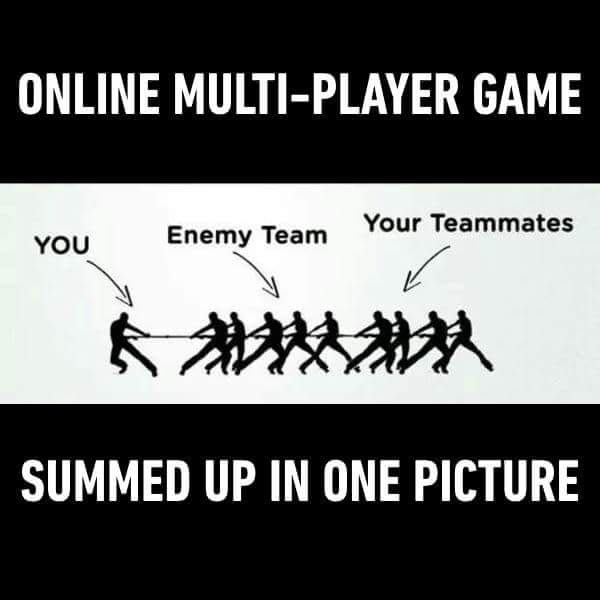Running a successful business takes more than just you at the helm.
It requires having a high-performing team operating like a well-oiled machine.
Of course, every business owner knows that. Nothing new there.
But going from knowing to doing gets a bit tricky.
Take 5 minutes in your busy day to ask yourself this questions:
- Is your current crew really a driving force for growth or holding you back?
- Are your team members frequently missing deadlines?
- Do you notice a high turnover rate?
- Is there a lack of new ideas and innovation?
- Do you need to constantly solve conflicts and misunderstandings among employees?
- Do you feel further away from your goals despite hard work?
- Are you the only one capable of truly running your business?
If you answered “yes” to 3 or more of those questions, it’s time for an intervention.

Pushing forward with an underperforming, dysfunctional team will only lead to more frustration. Keep reading to discover 5 proven strategies and 15 solid practices/actions for transforming your human capital into a winning, cohesive unit propelling your business to new heights.

Table of Contents
- Chart Your Team’s North Star
- Assemble Your Dream Team
- Galvanize Your Team with your Leadership
- Ignite Collaboration Fireworks
- Deploy The Conflict Resolution Playbook
- Conclusion
Do you want to dive in more on how to create a scalable business? Join my virtual event SMART Challenge. I will show you 5 assets you should have to bolster up your million dollar business.
Chart Your Team’s North Star
A team without clear direction is like a ship without a compass – just drifting aimlessly. In this chapter, you’ll learn how to set a strong vision and goals for your team. Having a defined purpose motivates people and aligns everyone’s efforts productively.

Decoding Vision vs Goals
A vision is an overarching view of the future you want to create – it’s your inspiration, your “northern star.” It provides direction and inspiration, outlining the company’s purpose and the impact it seeks to make.
Goals, on the other hand, are specific, measurable targets that help achieve the vision. They break down the vision into actionable steps, offering clear milestones and objectives for the team to work towards.
Why Your Crew Craves a Rallying Mission
Having a clear vision and goals is crucial for several reasons.
- They provide a sense of purpose and direction. When team members understand the larger picture and how their roles contribute to it, they are more motivated and engaged.
- Clear goals help in prioritizing tasks and allocating resources efficiently, ensuring that efforts are aligned with the overall vision.
- Having defined goals allows for measurable progress, making it easier to track success and make necessary adjustments.
Visions and Goals That Ignited Business Legends
Several companies exemplify the impact of having a strong vision and well-defined goals:
- Google: Google’s vision is “to provide access to the world’s information in one click.” Their goal of making information universally accessible has driven initiatives like Google Books and Google Translate.
- Tesla: Tesla’s vision is “to create the most compelling car company of the 21st century by driving the world’s transition to electric vehicles.” Their goals include increasing production efficiency and developing affordable electric cars, which have revolutionized the automotive industry and promoted sustainable energy.
- Amazon: Amazon’s vision is “to be Earth’s most customer-centric company.” This vision shapes their customer-first approach. Their goals focus on enhancing customer
Do you want to find more secrets on how to build a winning team? Join the SMART Challenge to unlock more and ask me questions directly.
Assemble Your Dream Team
Your team’s skills and talents are key to your success. This chapter will explore how to evaluate your team and ensure you have the right people to develop their skills and grow with your business.

Experience vs Passion: What Matters More?
When building a winning team, one crucial decision is choosing between relevant experience and high motivation. While experience brings valuable knowledge and proven skills, motivation often drives continuous learning and adaptability. Experienced individuals can navigate familiar challenges efficiently, ensuring smooth operations and stability. However, highly motivated team members bring enthusiasm and a fresh perspective. They are often more willing to go the extra mile, embrace new ideas, and drive innovation. Striking a balance between the two can be key; consider roles where experience is non-negotiable and others where motivation can lead to exceptional growth and success.
Leverage Your Team’s Superpowers
Understanding and utilizing the unique strengths and talents of each team member is essential for maximizing productivity and satisfaction. Tools like the OAD (Organizational Analysis and Design) personality test can help identify these strengths. OAD assesses various traits, such as decision-making styles, communication preferences, and leadership qualities. By aligning roles with individual strengths, employees are more likely to excel and feel fulfilled. For example, a detail-oriented individual might thrive in a quality control role, while a creative thinker might excel in marketing. Utilizing personality tests can ensure that people are placed in positions where they can perform their best and contribute most effectively to the team’s success.
Diversity: Your Hidden Competitive Weapon
Diversity is a cornerstone of a successful team. A diverse team brings together different perspectives, experiences, and problem-solving approaches. This variety fosters creativity and innovation. For example, a marketing firm with team members from different cultural backgrounds brainstorms a new campaign. Their diverse perspectives lead to a unique and compelling concept that resonates with a wider audience, boosting the firm’s market presence and success.
Moreover, diversity enhances decision-making by providing a broader range of viewpoints, leading to more comprehensive and effective solutions. Here is one example. A manufacturing company forms a diverse project team to address a production issue. With varied expertise and viewpoints, the team quickly identifies the root cause and implements a multifaceted solution, reducing downtime and saving costs.
Finding the right person on the right seat is not easy. I will show you exactly what I do in the SMART Challenge. Take the chance to explore my billion dollar experiences face to face.
Galvanize Your Team with your Leadership
Strong leadership is essential for building a winning team. In the following paragraphs, I provide solid and practical insights on leadership styles and my billion-dollar business experiences on leading a team. These strategies will help you cultivate effective and inspiring leadership.

Unpacking the Leadership Styles
Strong leadership is a cornerstone of a successful team. There are various leadership styles, each with its unique approach to guiding and motivating a team.
- Autocratic Style
Autocratic leaders make decisions independently, often without input from team members, focusing on control and efficiency. - Authoritative Style
Authoritative leaders set a clear vision and direction, inspiring and motivating team members to follow their lead with confidence. - Pace-Setting Style
Pace-setting leaders set high performance standards and lead by example, expecting team members to keep up with their fast pace and high expectations. - Democratic Style
Democratic leaders involve team members in decision-making processes, encouraging collaboration and valuing diverse opinions. - Coaching Style
Coaching leaders focus on personal and professional development, guiding team members through feedback and support to help them reach their potential. - Affiliative Style
Affiliative leaders prioritize building strong relationships and team harmony, creating a supportive and positive work environment. - Laissez-Faire Style
Laissez-faire leaders provide minimal direction and allow team members to self-manage, fostering independence and innovation.
Understanding and adapting these styles based on team needs and situations can enhance team performance and satisfaction.
Guide Don’t Grip: The Path to Autonomy
Effective leaders provide support rather than micromanaging their teams. Micromanagement can lead to decreased morale, reduced creativity, and a lack of ownership among team members. Instead, leaders should focus on empowering their teams by offering guidance, resources, and support when needed. Regular check-ins and open communication channels ensure that leaders stay informed and can provide assistance without interfering in day-to-day activities. This balance allows teams to work efficiently while feeling valued and trusted, leading to higher productivity and job satisfaction.
Fostering a Culture of Trailblazers
Encouraging your team to take risks and experiment is vital for fostering innovation and growth. Leaders should create an environment where mistakes are viewed as learning opportunities rather than setbacks. This approach not only boosts creativity but also helps teams to develop resilience and problem-solving skills. By celebrating successes and analyzing failures constructively, leaders can help their teams to continuously improve and innovate. Allowing space for experimentation can lead to breakthroughs and significant advancements, driving the team and the organization toward greater achievements.Jon
Check Snow’s Top 9 Rules For Success And Leadership
Ignite Collaboration Fireworks
Collaboration is the engine that powers high-performing teams. When everyone works together toward shared goals, you’ll see higher engagement, better ideas, and greater productivity. This chapter provides proven practices for fostering a collaborative culture of teamwork.
Roles and Responsibilities Redefined
For collaboration to work, team members must understand how their individual roles and responsibilities intersect. Overlapping duties lead to duplicated efforts and inefficiency.
Start by reviewing each person’s current responsibilities and skills. Identify any overlap, gaps, or misalignment of duties. Then, work with your team to clarify roles moving forward. Develop clear, documented role descriptions capturing key duties and deliverables for each position.
Revisit these role definitions annually or as your team evolves. Responsibilities may need adjusting based on employees’ strengths, development areas, and organizational needs. Consistent role clarity is key.
Design Open Dialogue Pathways
Clear communication channels are essential for ensuring that information flows smoothly within your team. This helps prevent misunderstandings, increases efficiency, and ensures that everyone is on the same page.
In my company, we use Slack to manage our communications effectively. We have separate Slack channels for each department and product line, as well as one main channel that includes everyone. For urgent messages, we put a red dot at the beginning to catch attention immediately. Additionally, always tagging the recipients ensures that messages reach the right people quickly. This structured approach helps streamline communication and keeps the team well-informed and focused.
Teamwork Exercises That Pack a Punch
- Pair Programming or Buddy System
Collaboration thrives through shared knowledge and accountability. Pair programming or implementing a buddy system ensures work gets reviewed and team members learn from each other continually. - Problem-Solving Workshops
Gather your team regularly to break down complex challenges together. Diverse perspectives spark innovative solutions. - Lunch and Learn
Schedule team lunches where different members take turns presenting on trends, best practices or their area of expertise. Sharing knowledge boosts collaboration. - Rotation of Meeting Roles
Don’t let the same people dominate meetings. Rotate roles like facilitator, note-taker, and timekeeper to keep everyone engaged. - Virtual Coffee Breaks
For remote teams, virtual coffee breaks provide much-needed casual interaction that builds rapport and trust between colleagues.
Come Meet Me LIVE and I’ll Show You How to Transform Your Business Into A Long Term Valuable Asset That Gives You Back Your Time.
Deploy The Conflict Resolution Playbook
While conflict is natural when working in teams, left unaddressed it can destroy morale and productivity. This chapter provides solid practices for resolving conflicts in a healthy, productive manner that actually strengthens relationships and teamwork.

Why Conflict Isn’t Your Enemy
Inevitably, even the most cohesive teams will face conflicts due to miscommunication, competing priorities, or clashing personalities and working styles. Avoiding or ignoring these conflicts allows resentment to fester.
Effective conflict resolution skills are crucial for maintaining a positive team environment. Resolving disagreements amicably reduces negativity. It prevents small issues from escalating into larger problems that derail momentum. And it models healthy communication practices that build trust and psychological safety for your team members.
Drafting Your Conflict Resolution Blueprint
Develop and distribute a straightforward conflict resolution policy that:
- Outlines steps employees should take when conflicts arise
- Defines what level of constructive debate and disagreement is acceptable/encouraged
- Specifies what conflict behaviors cross the line into harassment, hostility or insubordination
The policy should provide a clear framework for addressing conflicts productively at the lowest level possible through open dialogue. It should also establish pathways for escalating issues to leadership if they cannot be resolved between the conflicted parties.
Hold a team meeting to review the new policy in detail. Use examples to ensure everyone understands the process and expectations around.
- How to initiate conflict resolution procedures
- What constitutes unacceptable conflict behavior
- How to give feedback and receive it with an open mind
- When to escalate conflicts to the next level
“I” Statements: The Conflict Disarmers
Team members should practice expressing themselves with “I” statements during conflicts. “I” statements..
- Reduce blame and defensiveness
- Focus on resolving the issue, not attacking the person
- Allow both parties to understand how actions affected the other
For example:
- “I felt frustrated when you missed that deadline because it impacted my workload.” Instead of: “You missed the deadline and screwed up my schedule!”
- “I feel that my tasks aren’t being prioritized when you work on individual projects instead of team goals.” instead of: “You’re always working on your own priorities instead of the team’s priorities!”
Role-play scenarios where team members rephrase accusatory statements using “I” statements. Have the team provide feedback on which “I” statements are most effective for opening constructive dialogues. This practice builds psychological safety and conflict resolution skills.
Conclusion
Building a winning team demands inspiration, structure, and emotional intelligence in equal measure. This guide has armed you with strategies for charting a unifying vision, assembling a dream roster of talent and leadership, fostering open dialogue, cultivating trust-based collaboration, and resolving conflicts constructively.
Even implementing a few of these team-strengthening principles can elevate engagement, innovation and performance dramatically. With clarity of purpose, role definition, and healthy communication – your well-oiled crew becomes unstoppable. The blueprint for team greatness is here. Seize it!
Ready to take your team’s success to the next level? Come meet me live at SMART Challenge virtual event where I’ll reveal how I build high performance teams plus 40 other fundamental assets every business needs to thrive. You’ll get invaluable insights PLUS the chance to get your burning questions answered live!


